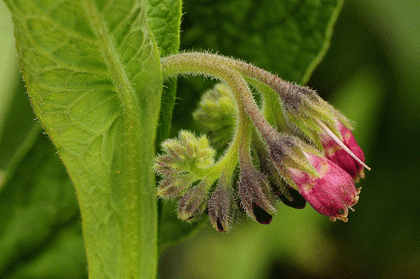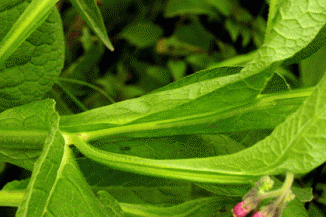Common Comfrey grows as high as 1.5m. Its flowers are 12-18mm long, tubular-bell-shaped, purple, pink or white. The edges of the flower are slightly upturned as 5 tiny lobes. These flowers are in branched, coiled clusters and are borne on erect, hairy, stems with down-pointing, tapering hairs & wings which continue from one leaf axil to next. The upper leaves are clasping, oval and hairy. The basal leaves are large, oval-lanceolate, stalked, untoothed and softly hairy. It grows in damp grassland, by riverbanks, waste ground and on marshes. It is a scattered perennial, probably introduced and belongs to the Borage family.
I first saw this plant and photographed it in 2012 near Slade, Co Wexford.
If you are satisfied you have correctly identified this plant, please submit your sighting to the National Biodiversity Data Centre




